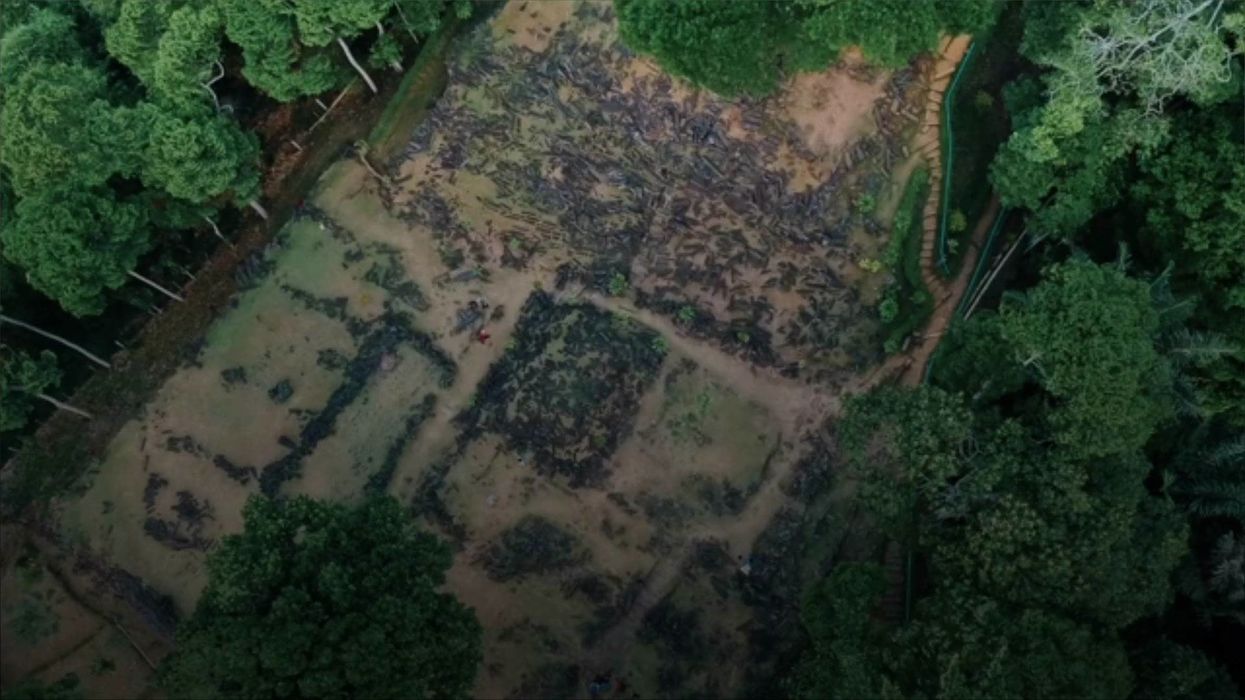Science & Tech
Liam O'Dell
Oct 23, 2025
Researchers in Indonesia claim prehistoric pyramid could rewrite human history
Wibbitz - News / VideoElephant
While Guinness World Records officially lists the Djoser Step pyramid in Egypt as the world’s oldest pyramid (around 2,630 BC), one paper published in October claimed a layer of the Gunung Padang pyramid in Indonesia was constructed as far back as 25,000 BC – though there has since been doubts as to whether the structure was ever man-made at all.
In research led by Danny Hilman Natawidjaja of the Indonesian Institute of Sciences, and published in the journal Archaeological Prospection, the academics write that “the pyramid’s core consists of meticulously sculpted massive andesite lava” and that the “oldest construction” element of the pyramid “likely originated as a natural lava hill before being sculpted and then architecturally enveloped”.
They write: “This study sheds light on advanced masonry skills dating back to the last glacial period. This finding challenges the conventional belief that human civilisation and the development of advanced construction techniques emerged only … with the advent of agriculture approximately 11,000 years ago.
“Evidence from Gunung Padang and other sites, such as Gobekli Tepe [in Turkey], suggests that advanced construction practices were already present when agriculture had, perhaps, not yet been invented.”
The academics also claim that the builders “must have possessed remarkable masonry capabilities”, but one UK archaeologist has rubbished the paper, saying he is “surprised [it] was published as is”.
Flint Dibble, from Cardiff University, told the journal Nature that there is no clear evidence to suggest the buried layers were built by humans.
“Material rolling down a hill is going to, on average, orient itself,” he said, adding that there’s no evidence of “working or anything to indicate that it’s man-made”.
Meanwhile, Bill Farley, an archaeologist at Southern Connecticut State University, is credited as saying “the 27,000-year-old soil samples from Gunung Padang, although accurately dated, do not carry hallmarks of human activity, such as charcoal or bone fragments”.
Natawidjaja has responded to the criticism by saying “we are really open to researchers around the world who would like to come to Indonesia and do some research programme on Gunung Padang”, while the co-editor of Archaeological Prospection has confirmed an investigation has been launched into the paper.
This article was first published on 11th December 2023
Why not read...
Mysterious pyramid discovered in Antarctica beneath the ice
Egyptian pyramids were likely built using an incredibly clever machine
Sign up to our free Indy100 weekly newsletter
Have your say in our news democracy. Click the upvote icon at the top of the page to help raise this article through the indy100 rankings.
Top 100
The Conversation (0)














